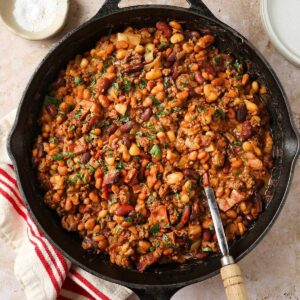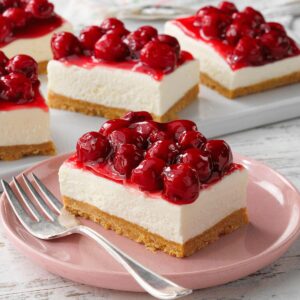The Dawn Powerwash Recipe has become a go-to solution for anyone seeking a fast, effective, and budget-friendly cleaner. Originally inspired by the popular Dawn Powerwash Spray, this homemade version mimics the store-bought formula’s degreasing power without the added cost. Perfect for tackling dirty dishes, greasy stovetops, grimy sinks, and more — it’s a staple in many DIY cleaning routines.
What makes this recipe special is its foaming action and grease-cutting strength, which gives it that professional edge. Whether you’re a fan of natural cleaners or just looking to save money, this recipe has earned its spot in the modern cleaning toolkit.
Ingredients
Here’s everything you’ll need to make your own Dawn Powerwash Spray at home:
-
2 tablespoons Dawn dish soap (original blue recommended for best results)
-
1 tablespoon rubbing alcohol (70% or higher)
-
1 cup warm water
-
Optional: 5–10 drops of essential oil (like lemon, lavender, or tea tree) for fragrance
-
Spray bottle with foaming nozzle (repurpose an old Powerwash bottle or use any foaming soap dispenser)
Substitutions:



-
Dish Soap Alternatives: Any other grease-cutting dish soap will work (Seventh Generation, Palmolive, etc.).
-
Alcohol Alternative: Use white vinegar if you prefer a more natural, non-alcohol option.
-
Fragrance-Free Option: Skip essential oils for sensitive noses or allergy concerns.
Step-by-Step Instructions
1. Prepare Your Bottle
Start with a clean, empty foaming spray bottle. If you’re reusing an old Powerwash bottle, rinse it thoroughly to remove any residue.
2. Add the Dish Soap
Pour 2 tablespoons of Dawn dish soap directly into the bottle.
3. Mix in the Rubbing Alcohol
Add 1 tablespoon of rubbing alcohol. This helps break down grime and acts as a disinfectant.
4. Add Warm Water
Pour in 1 cup of warm water slowly to avoid bubbles. Leave a bit of space at the top so you can shake it without overflowing.
5. Essential Oils (Optional)
Add 5–10 drops of your chosen essential oil for a pleasant scent and extra antibacterial power.
6. Shake Gently
Close the bottle and shake it gently to mix everything together.
7. Test and Use
Spray on dirty dishes, countertops, appliances, or anywhere grease lingers. Let it sit for 1–2 minutes before wiping clean.
Common Mistakes to Avoid:
-
Shaking too hard can cause excess foam — swirl gently.
-
Using cold water may not mix the soap well.
-
Using a regular spray bottle may not produce the desired foam effect.
Pro Tips and Cleaning Techniques
-
Foaming Bottle Hack: If you don’t have a foaming nozzle, use a foaming hand soap dispenser — it works similarly!
-
Let It Sit: For stubborn messes, let the spray sit for 5–10 minutes before scrubbing.
-
Boost Cleaning Power: Add a teaspoon of baking soda for an extra boost on baked-on food or greasy pots.
-
Sanitizing Tip: Use 90% rubbing alcohol for better disinfecting if needed.
Variations and Customizations
For Different Lifestyles:
-
Eco-Friendly: Swap rubbing alcohol with vinegar and use biodegradable dish soap.
-
All-Natural: Use Dr. Bronner’s Castile soap and tea tree oil.
-
Sensitive Skin: Choose fragrance-free dish soap and skip the essential oils.
-
Low-Waste: Refill your same foaming bottle every time with this homemade mix.
Fun Adaptations:
-
Citrus Kick: Add orange or grapefruit essential oils for a fresh kitchen scent.
-
Holiday Scent: Use peppermint oil around winter for a festive twist.
Serving Suggestions (Usage Ideas)
While you’re not exactly serving this (thankfully!), here’s how to get the most out of your cleaner:
-
Dishes: Spray directly onto dirty plates or pans before scrubbing.
-
Sinks & Faucets: Spray, let sit, and wipe with a microfiber cloth.
-
Stovetops: Loosen grease and food buildup in seconds.
-
Bathroom Counters: Disinfect and shine all in one go.
-
Grimy Handles & Knobs: Give them a quick spritz for a refresh.
Pair with a microfiber cloth, dish brush, or scrubbing sponge for optimal results.
Nutritional Information
Not for consumption! But if you’re curious about what you’re cleaning with:
-
Calories: 0
-
Fat: 0g
-
Carbs: 0g
-
Protein: 0g
-
Toxicity: Low (still, do not ingest!)
-
Eco Impact: Depends on ingredients used — use biodegradable soap for a greener clean.
Frequently Asked Questions (FAQs)
Q: Can I use vinegar instead of rubbing alcohol?
A: Yes, vinegar is a great natural substitute. It won’t disinfect as thoroughly, but it works well on grease.
Q: Is this safe for kids and pets?
A: It’s safer than many commercial sprays but still contains soap and alcohol — store out of reach and rinse surfaces after use.
Q: Can I use it on glass or mirrors?
A: It’s not ideal for streak-free glass. Try a vinegar-water solution for that.
Q: How long does it last?
A: Stored in a cool place, it’s good for up to 2–3 weeks. Shake before each use.
Q: Can I double the recipe?
A: Absolutely — just keep the same proportions!
Closing Thoughts
This DIY Dawn Powerwash Recipe is proof that you don’t need harsh chemicals or expensive products to get a powerful clean. It’s simple, effective, and customizable — what’s not to love?
Try it out and let us know how it worked for you. Got your own twist on the recipe? Drop it in the comments or share your results with friends — clean spaces are always better when shared!



